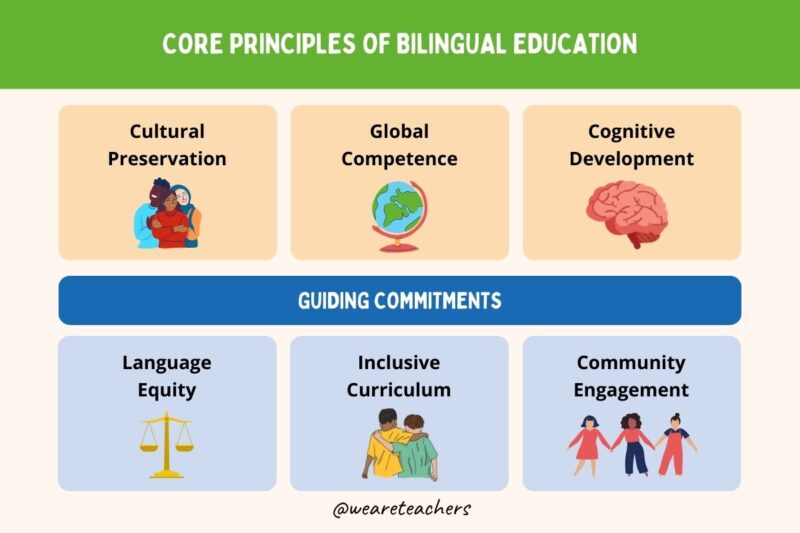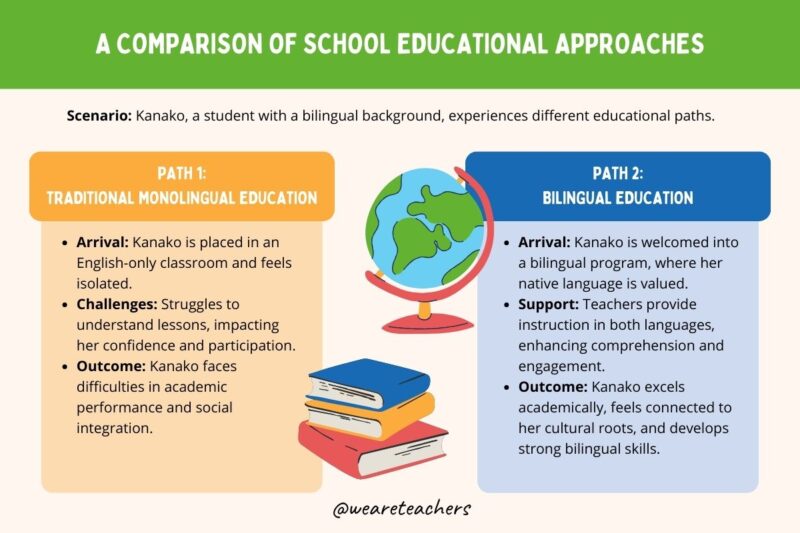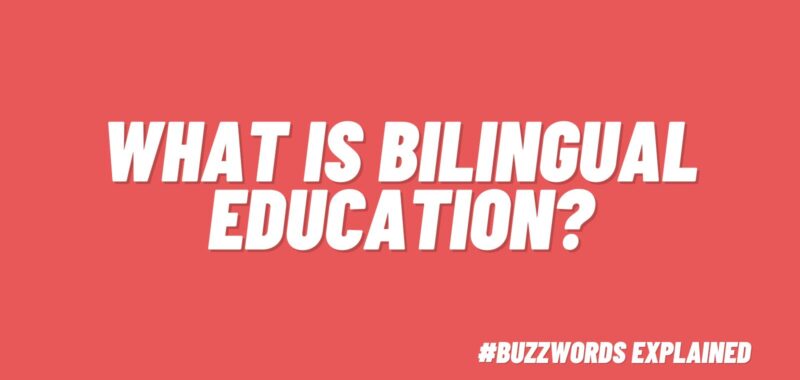Bilingual education goes beyond simply mastering two languages. When students embrace this type of learning, they gain a richer understanding of the world’s diverse cultures, which can boost their academic achievements and open doors to exciting career paths. There are many ways bilingual education is making a positive impact in classrooms right now.
What is bilingual education?
Bilingual education involves teaching in two languages: the student’s native language and a second language. Unlike traditional schools where the second language is often taught as just a subject, bilingual schools integrate both languages when teaching all subjects. The goal is to help students become proficient in both languages while completing the regular curriculum.
Importance of Bilingual Education

Cultural Preservation
One of the biggest draws of bilingual education is that it allows students to maintain and appreciate their cultural identity. It also fosters respect and understanding of diverse cultures within the classroom.
Global Competence
As globalization increases, being bilingual or multilingual equips students with essential skills to navigate and succeed in an interconnected world. This is, of course, valuable in our multicultural society but can be a real asset when traveling or seeking a job in the future.
Cognitive Development
Research shows that bilingualism enhances cognitive abilities, including problem-solving, multitasking, and creativity. Learning in two languages requires the brain to constantly switch between linguistic systems, which strengthens mental flexibility and executive function.
Benefits of Bilingual Education
Academic Achievement
Studies have shown that bilingual students typically outperform their monolingual peers in tasks involving executive control, problem-solving, and abstract thinking. Due to the nature of bilingual education, this positive impact extends to their learning in all subjects.
Enhanced Communication Skills
The ability to switch languages fluidly enhances communication skills and broadens people’s social and professional networks. It can also give students more options for expressing themselves, which is fantastic both inside and outside of the classroom.
Employment Opportunities
Being proficient in more than one language opens up diverse career opportunities. This is especially important for students who plan to pursue careers in international business, diplomacy, translation, and tourism.
Cognitive and Health Benefits
Research has shown that bilingual individuals have significantly more gray matter in the area of the brain responsible for decision-making, motivation, and emotional regulation. On top of that, bilingualism has been linked to delayed onset of dementia symptoms and better recovery outcomes after strokes!
Multitasking Masters
Bilingual individuals are consistently switching between languages. It shouldn’t be a surprise, therefore, that this ability improves their multitasking skills in other areas of life.
Efficacy of Bilingual Education

Bilingual education’s effectiveness is well documented. Programs that emphasize both languages equally tend to produce students who are proficient in both, without sacrificing academic content.
Let’s take a look at two examples for how bilingual learning can be implemented.
Path 1: Traditional Monolingual Education
Language Exposure
Students are primarily exposed to one language.
Cultural Awareness
Kids learn about diverse cultures but in their native language. While still beneficial, some cultural awareness and sensitivity can get “lost in translation.”
Academic Performance
Research shows that monolingual learners do not perform as well as bilingual learners when it comes to problem-solving and multitasking.
Path 2: Bilingual Education
Dual-Language Proficiency
Students learn all subjects in two languages. Gaining fluency in a second language enhances their communication skills.
Cultural Immersion
Regular exposure to multiple languages and cultures gives students a more inclusive and global perspective. This is incredibly valuable for personal and professional growth in a multicultural world.
Academic Success
Studies show that bilingual students often outperform their monolingual peers academically, and are better equipped to handle complex tasks and excel in subjects requiring critical thinking.
Examples of Bilingual Education Programs
Two-Way Immersion Programs
Students from two different language backgrounds are taught together in both languages, promoting bilingualism and biliteracy for all. For example, English-speaking students and Spanish-speaking students could learn together in classes taught in both languages.
Transitional Bilingual Education
Students initially receive instruction in their native language while gradually transitioning to the second language. This is a great option if schools are worried that learning core subjects in a second language could be too difficult at first.
Dual-Language Programs
Instruction is delivered in two languages with the goal of developing proficiency in both. Students might spend their morning learning in English, for example, and spend their afternoon learning in French.
Heritage Language Programs
These programs are designed for students who speak a minority language at home. The goal is for students to maintain their native language while learning the dominant language of the society they’re in. This could look like a Mandarin-English program for Chinese American students who are becoming fluent in English.
English as a Second Language (ESL) Programs
ESL programs provide targeted support for students whose first language is not English. These programs aim to improve English proficiency while allowing students to continue their education in their native language.
Content and Language Integrated Learning (CLIL)
CLIL involves teaching specific subjects in a second language. For example, a school might teach history classes in Spanish to English-speaking students, combining language learning with subject matter education.

